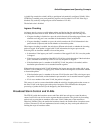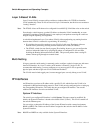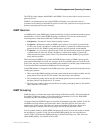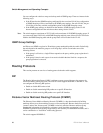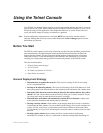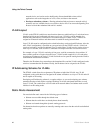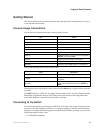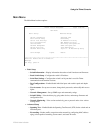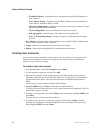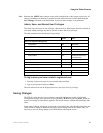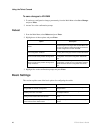
ZT8101 User’s Guide 41
Using the Telnet Console 4
Your ZT8101 Fast Ethernet Switch supports a console management interface that allows you to set
up and control your switch, either with an ordinary terminal (or terminal emulator) or over a TCP/
IP network using a Telnet application. This chapter describes how to use the Telnet Console to
access the switch, change its settings, and monitor its operation.
Note: Switch configuration settings that are saved with APPLY are only active until the switch is
rebooted. Settings that are saved to non-volatile RAM (with the Save Changes option from the
Main Menu) are retained.
Before You Start
The ZT8101 switch supports a wide array of functions and provides great flexibility and increased
network performance by eliminating the routing bottleneck between networks: the WAN, the
Internet, and the intranet. This new generation switch performs routing functions in hardware
rather than software. To take full advantage of this flexibility and rich feature set, you need to
carefully plan a deployment strategy that will maximize the potential of the ZT8101 switch.
This plan should include a
• “General Deployment Strategy”
• “VLAN Layout”
• “IP Addressing Scheme for VLANs”
• “Static Route Assessment”
General Deployment Strategy
• Determine how to segment the network—This involves creating VLANs in an existing
Layer 2 switched network.
• Develop an IP addressing scheme—This involves allocating a block of IP addresses to each
network segment. Each network subnet is then assigned a network address and a subnet mask.
• Determine which network resources must be shared by the subnets and how they will be
shared—You can connect shared resources directly to the Layer 3 switch, if need be. Or you
can set up static routes to make the shared resources accessible.
• Determine how each subnet will communicate with the WAN or Internet—Again, static
routes should be determined and default gateways identified.
• Develop a security scheme—Some subnets on the network need more security or should be
isolated from the other subnets. You can use MAC and IP filtering. You can also configure one
or more VLANs on the Layer 3 switch without an IP subnet. Without a subnet mask, these
VLANs function as a Layer 2 VLAN and require an external router to connect to the rest of the
network.
• Develop a policy scheme—Some subnets will have a greater need for multicasting
bandwidth, for example. A policy is a mechanism to alter the normal packet forwarding in a



